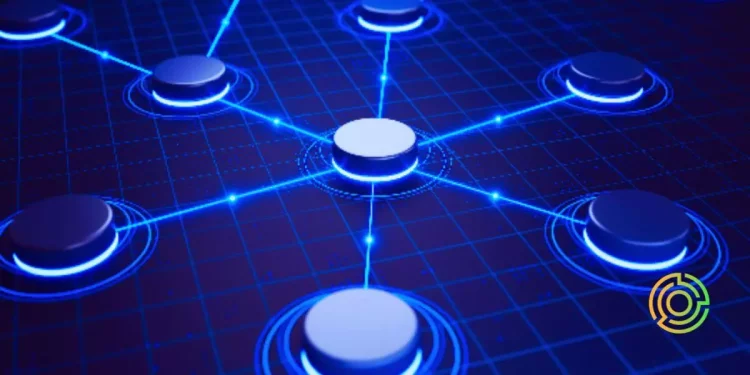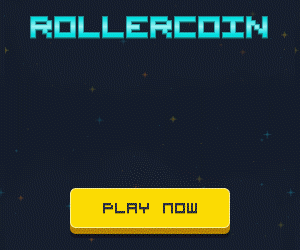The cryptocurrency space is evolving rapidly and continues to capture the attention of people around the world who are aware of its potential. With the emergence of more and more blockchain platforms, developers, builders, and cryptocurrency enthusiasts are flocking around them according to their application needs.
To choose the best blockchain platform to power your new business model or Dapps, you should consider which blockchain platform offers efficient and streamlined supply chains, improved traceability, seamless trading, and enhanced financial transactions.
Each blockchain platform faces some or other challenges, such as speed and power consumption. Therefore, it is important to select the one that offers practical utility for your business uses and applications.
If you are still wondering what these blockchain platforms are, why they are gaining a lot of attraction and how to select the right development platform to dive into the world of cryptocurrencies, here is the answer.
With several blockchain platforms offering something different from the others, be it transaction speed or gas rate, it is difficult to identify the best blockchain for you.
Best Blockchain platforms
1. Cardano
Since Cardano was created by Ethereum co-founder Charles Hoskinson, Cardano, and Ethereum share many similar characteristics. This makes them both fight for the top spot to become the best blockchain platform by 2023.
Cardano was the first blockchain to adopt a PoS mechanism. In addition, the recently updated Alonzo hard fork would help anyone design and deploy their own smart contract.
Cardano is focused on facilitating transactions on its native crypto (called ADA) and providing a convenient environment for developers to create scalable and reliable Cardano-powered applications.
2. Polkadot
Polkadot is known for having particular capabilities that no different blockchain platform, which includes Bitcoin or Ethereum, can match. It is a decentralized protocol that connects unrelated blockchains and sends values and information among them without intermediaries.
It is also designed to be scalable and fast, thanks to a technology that employs multiple parallel blockchains known as parachain’s. It shifts a significant amount of processing load away from the main blockchain through parachains.
As a result, the Polkadot network is capable of processing more than 1,000 transactions per second. Polkadot should get faster and faster as the network grows and more parachains are added, with speeds that could reach 1 million transactions per second.
3. Ethereum
When we talk about Ethereum, we’re not just talking about a blockchain, but a protocol that runs numerous DApps and independent blockchains. Its versatility makes it the best blockchain platform available in the cryptocurrency market.
Introduced in 2013, Ethereum is the first decentralized blockchain platform that uses smart contract functionality to ensure smooth and stable operations. Its Ether (ETH) token currently holds the largest market cap powered by the Proof-of-Stake (PoS) mechanism and the second largest market cap among cryptocurrencies.
With the successful merger upgrade that moved Ethereum from PoW to PoS, Ethereum is expected to handle more transactions, alleviate bottlenecks and ultimately become the best blockchain platform.
Apart from that, it also has multiple other token standards, such as ERC-20 for DeFi applications, ERC-721 and ERC-1155 for NFT projects, and ERC-777 for enhanced functionality.
As the leading blockchain platform, it hosts more than 460,000 token contracts that are based on its ERC-20 token standard. Some of the major crypto tokens are Basic Attention Token (BAT), Tether (USDT), USD Coin (USDC), Chainlink (LINK), and Dai (DAI).
Among all other blockchain platforms, Ethereum offers NFT the maximum exposure to a huge and potential cryptocurrency market. It is certainly the first preference for many developers, as Ethereum is one of the most established and mature leading blockchain platforms.
4. Polygon
Polygon emerges as the most popular blockchain, which operates using the Ethereum blockchain and connects blockchain-based projects.
Basically, it is a layer 2 solution that has generated trust for its features, such as improved flexibility, scalability, and sovereignty of blockchain projects.
While offering the structural advantages of the Ethereum blockchain, Polygon has unmatched security and interoperability. Its MATIC token is an ERC-20 token that makes it compatible with other Ethereum-based cryptocurrencies.
The quality that brings it to the list of the best blockchain platforms is its fast transaction processing speed.
Polygon works with proof-of-stake and can deploy existing blockchain networks. In addition, it can also develop custom blockchains and help existing blockchain platforms to be compatible with Ethereum.
All these reasons combined make Polygon the best blockchain platform available for those who want to deploy their project on secure, interoperable, and cost-effective blockchain.
5. Binance Smart Chain
Binance Smart Chain (BSC) is a blockchain platform for smart contracts that was launched at the end of August 2020. BSC was built as a complement to Binance Chain, which was launched in April 2020 to support decentralized trading.
Binance Chain is Binance’s first blockchain. It is an independent blockchain powered by a PoS consensus mechanism. Although optimized for fast decentralized trading, BSC lacks smart contracts and strong programmability.
Therefore, Binance Smart Chain (BSC) was created that runs in parallel to the original Binance chain. Thus, BSC has smart contract functionality and is also compatible with the Ethereum virtual machine (EVM). Its transaction time is about 3 seconds. The native token of both Binance Chain and Binance Smart Chain is BNB.
Validators tokenize BNB and can receive transaction fees. It’s very low transaction fees, high transaction processing speed, and interoperability have set it apart from other blockchain platforms.
Given that Binance Smart Chain offers cross-chain compatibility features, hopes are high that it will soon become the blockchain platform of choice for developers in 2023.
6. TRON
TRON has been developed with some basic elements of the Ethereum blockchain. In addition, the transaction fees are comparatively much lower. TRC is TRON’s native token.
Like Ethereum, it has token standards of TRC-20 for fungible coins and TRC-721 for NFT on TRON’s blockchain platform.
What sets it apart from Ethereum is its transaction speed, as it can handle approximately 2,000 transactions per second. TRON is based on a three-layer architecture: storage, core, and application. The TRON protocol uses Google’s protocol buffers, which enable multilingual extensions.
For all these reasons, developers are tempted to switch to TRON, making it a fairly popular blockchain platform in the cryptocurrency market.
7. Avalanche
Avalanche is a blockchain platform that offers a fusion of scaling capabilities and fast confirmation times through its Avalanche Consensus Protocol. Its PoS mechanism helps it process 4,500 transactions per second (TPS), well above Ethereum, which stands at 14 TPS.
The native AVAX token is a utility token that protects the network. AVAX also serves as the medium of exchange for the Avalanche DeFi ecosystem. Simply put, the token is used as a currency within the network, typically for transaction fees, incentives, and many other use cases.
Avalanche was built to address many of the problems faced by most blockchain networks. Due to its tremendously powerful processing speed and low gas rate, it becomes a perfect choice for developers looking for an alternative to Ethereum.
8. Aptos
Founded in 2021, Aptos blockchain is a Move-based layer 1 blockchain created by former Meta engineers. Aptos Labs, a company behind the blockchain, is made up of professionals from the Diem team. The team is best known for its involvement in Meta’s pursuit of digital asset monetization.
However, Aptos is much more than history. Its core network is up and running. It has already surpassed 67 million total transactions. Aptos’ comprehensive smart contract audit is critical to creating secure and reliable dApps on this blockchain. Aptos’ Layer 1 solution has a lot to offer the Web3 community this year.
9. Ripple
Founded in 2012, Ripple, founded in 2012, is a blockchain that decided to drive conventional price vendors out of commercial enterprise. Ripple’s native forex, XRP, has a market capitalization of nearly $20 billion.
The figure is not quite on par with Ethereum’s mcap, but it is still a considerable amount for any cryptocurrency. And Ripple is no different from a normal cryptocurrency. In fact, Citi and other well-known names use Ripple.
Ripple’s ledger is called XRPL. XRPL has three main use cases:
- Power decentralized exchanges of digital assets.
- Performing cross-currency payments with auto-bridging.
- Supporting on-chain tokens.
First, it is on a watch list in the cryptocurrency world. Second, XRPL has a lot to prove in the world of finance. The blockchain platform is worth keeping a close eye on in 2023.
Follow us on our social networks and keep up to date with everything that happens in the Metaverse!.
Twitter Linkedin Facebook Telegram Instagram Google News











































